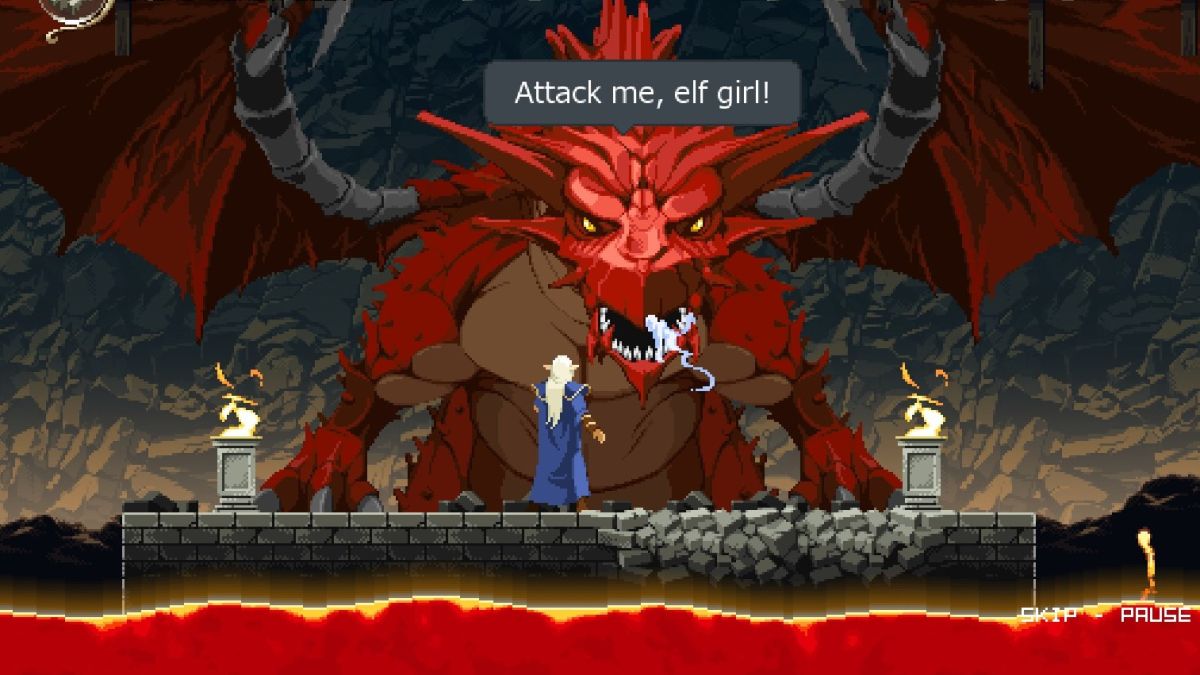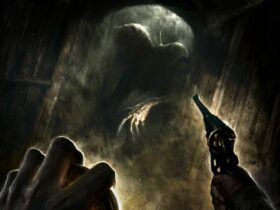Lodoss War Record: Deedlit in Wonder Labyrinth review
🖥️
need to know
What is it? A bite-sized 2D pixel art Galactic Castlevania.
Expect to pay: 20 USD/15.49 GBP
Developer: Why is it so serious? , The ladybug team
Publisher: Why is it so serious? , Gameism
Comment time: Windows 10, AMD FX 8350 octa-core, Radeon RX 580, 24GB RAM
multiplayer game? No
Association: steam
If you are not familiar with the Lodoss war novels, desktop RPGs, and anime records from the 80s and 90s adjacent to D&D, Deedlit in “Marvel Labyrinth” will be difficult to understand until the end. The story is airdropped in roles such as Parm (Deedlit’s lover), Pirotess (Deedlit’s competitor), and Ashram (a big bad guy). Solving their relationship is like starting Wandavision in episode 9 without watching a Marvel movie. Later, Deedlit in “Miracle Labyrinth” reflects Wandavision’s exploration of sadness, which is meaningful to anyone.
However, non-fans don’t have to worry too much about following the story. The Metroidvania genre has traditionally focused on exploring 2D dungeons rather than cohesive narratives, and Deedlit in “Miracle Labyrinth” is no exception. It checked all the familiar Metroidvania boxes, although its shortness and lack of difficulty made me want it.
(Image source: Why is it so serious?/Playism)
When I reached the highest level of spirit, a voice roared “Level 3”, and the green cube flew across the screen with sharp chirps.
Deedlit is a high elf whose flowing cloak, long hair and fast back figure purposefully imitate Castlevania: Symphony of the Night Alucard. She can wield melee weapons and bows and arrows, and can cast some elemental spells. More importantly, she can control the spirit of wind and the spirit of fire. With the tap of a button, I can switch between these two modes or postures, attacking with my basic weapon to cause one or the other type of damage, and I am immune to this type of damage.
Using one spirit to cause damage will fill the level of another spirit, up to level three, and being hit will reduce the level of the equipment mode. At the third level, Deedlit regains health at a steady (if noisy) rate. The art style may make people scream “Symphony of the Night,” but the sound design is more reminiscent of early 16-bit games, such as Altered Beast. When I reached the highest spiritual level, a voice roared “Level 3”, and the green cube flew around on the screen with high-profile chirps, restoring me one health value at a time.
Switching between fire and wind is a surprisingly interesting and complex problem, and most enemies, bosses, and platform challenges encourage or demand it. Every enemy has at least one elemental weakness, resistance or immunity. These weaknesses, resistances or immunity are clearly displayed in the range of 1 to 6 through clever dice icons. The dragon leader in the early game mainly caused fire damage, but he was immune to fire. When he covers the floor with dragon’s breath, I can switch to fire mode as a defensive action, or if I am about to fall into lava, then switch to wind mode when I see an opening where I can slice and dice. Mode switching is also used outside of combat. Wind and fire obstacles force me to switch when jumping or running. Wind Spirit also gives the ability to hover over spikes and enemies, which is useful throughout the game. The fire spirit gave the ability to detonate the barrel, but strangely, the skill has never been used outside the tutorial area.
Exploiting the enemy’s weaknesses by swapping modes, using element-powered bows and arrows, and releasing screen clearing spells is still enjoyable throughout the short running time of the game, even though the enemy still has many shortcomings. Metroidvania fans are used to creatively Gothic enemies and creepy monsters, but Deedlit fights highly fantasy creatures such as dark elves, minotaurs, goblins, and slightly enlarged crocodiles. Some late game beasts, such as the basilisk, are huge and powerful, but every enemy faces the same problem: they are very slow. As a veteran of countless galactic castles, Deedlit in Wonder Labyrinth is one of the simplest games I have ever played, thanks in large part to the enemy’s movement and response time. Before they can launch an attack, it is easy to fall into any enemy. Deedlit’s ability to easily restore health further exacerbates the mild difficulty. It only takes a few blows to raise my spirit to level 3, and it is trivial to stay still until I continue to restore all my health.
The only exception is the boss battle, which has a beneficial balance of attack rhythm memory and instant element exchange to take advantage of weaknesses. The bosses in the mid and late game are mostly human-sized opponents (fans of the series will be familiar with them), and they can move and fight as fast as Deedlit. A useful spell can summon a tree spirit that shoots vines, which is invaluable to a particularly annoying Boss who is very weak to plants, and a bow with a fast rate of fire and light element gives him a faster second form. Miracle.
(Image source: Why is it so serious?/Playism)
By exploring the various paths and secrets of the dungeon, you can find spells, weapons, bows and arrows, and some additional boosters-this is the main content of this type. Wonder Labyrinth designed the vertical axis and winding corridors to create a traditional Castlevania-like experience (minus the fragile chandeliers), but after exploring the map 100%, I don’t remember finding a secret. I have been trained to search for false walls and secret paths in every room, but I did not find anything hidden or cunning in Wonder Labyrinth.
Most Metroidvania encourage backtracking by unlocking new abilities, but Wonder Labyrinth is more linear, guiding me into each area one by one. Instead of gaining new traversal abilities, defeating the boss in each stage only needs to unlock a new set of colored doors and open the next area (maybe I can now visit a door in the previous area). The only exceptions are double jumps and triple jumps, but their critical applications are disappointingly limited.
Deedlit in Wonder Labyrinth is a short and interesting attempt at an old genre. Mode switching and elemental attacks are fun, but when it starts to reach the appropriate climax, the game is over, and in less than 6 hours 100% of the map (and possibly all equipment and spells) are displayed. Not withdrawing from the complete symphony, but an interesting little ensemble.
Today’s best deal
Check more articles in our categories Gaming & News et Anime.
Thanks for visiting we hope our article Lodoss War Record: Deedlit in Wonder Labyrinth review
, we invite you to share the article on Facebook, pinterest and whatsapp with the hashtag ☑️ #Lodoss #War #Record #Deedlit #Labyrinth #review ☑️!














Leave a Review